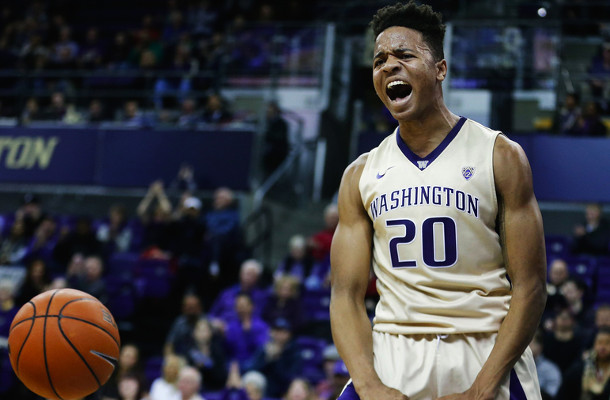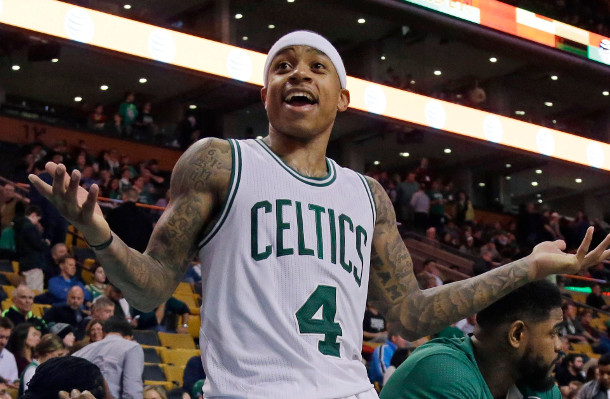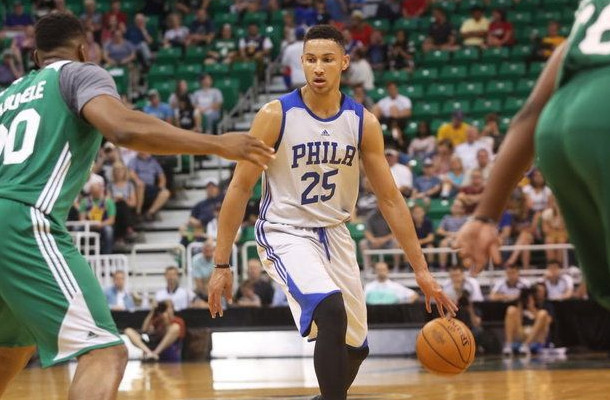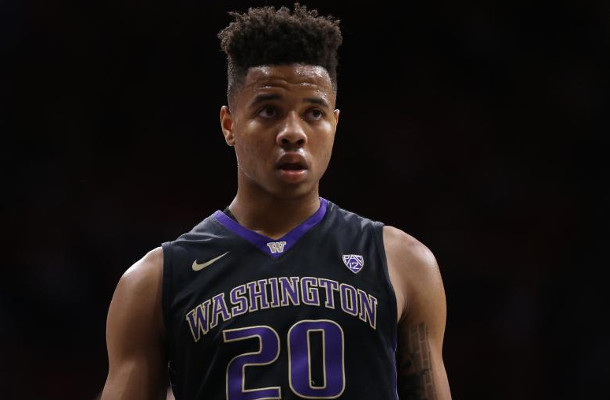Fixing the NBA’s tanking problem

How the NBA should fix its tanking problem has become a major point of conversation once again, as Brian Windhorst has reported that the league could vote on a proposed amendment to lottery changes as early as their Board of Governors preseason meeting in October, and the new rules could be in effect next season.
The Sixers, unsurprisingly, are pushing to have this delayed.
The question about reforming the draft lottery ultimately comes down to two questions: 1) What problem are you trying to solve, 2) How did we get here?
The answer to the first question is pretty obvious: the NBA is not trying to solve tanking. Tanking is hardly a new phenomenon, as teams have been making halfhearted efforts to field competitive teams in order to maximize their chances in the draft for years. Many of those teams that are now rife with righteous indignation are doing so after the fruits of their tanking labor have come to pass. The Boston Celtics, who made pretty brazen tanking efforts to get Tim Duncan and Greg Oden, including an effort where their own players were questioning whether their lack of playing time was impacted by the teams desire for losses, introducing a fix to this problem is somewhat laughable.
The problem the NBA is trying to fix is the perception issue created by the Sixers, a perception that was created mostly by their unwillingness to pay anything more than lip service to winning now. It was not just that the Sixers tanked, it was that they were open about it that has the league in a frenzy.
It is only in this context that the NBA’s latest proposal makes sense.
A quick recap of the major changes in the latest proposal, as first detailed by Zach Lowe:
- The 4 worst teams will have an 11% chance for the top pick. This is down from 25% (worst record), 19.9% (2nd worst), 15.6% (3rd worst), 11.9% (4th worst) and so on.
- The 5th pick will have a 10% chance at the top pick (down from 8.8% currently), and decrease slowly from there, ending up with the best lottery team having a 2% chance at the top pick, up from the 0.5% chance that it currently has.
- The top 6 draft selections will be in the lottery. Currently, only the top 3 selections are drawn from the lottery, then 4-14 are ordered by the remaining teams with the worst record. This means that, in the current system, the team with the worst record can’t get lower than the 4th pick, 2nd worst record can’t get lower than the 5th pick, etc. Under the new system, the team with the worst record could get as low as the 7th pick in the draft.
There are, ultimately, 2 ways to go about to fix tanking. The first is to disincentive teams enough that they are no longer willing to go through the pains of tanking for the (now decreased) chances of a reward. This is path of least resistance, the method that would be easiest to garner support from owners and the one unlikely to face major objection from the Players Association when it’s time to renegotiate the CBA. This seems to be the NBA’s preferred method.
The second way to fix the problem is take a look at why teams are so convinced that the draft is the best way to build a team long term. Teams that are so desperate that owners are willing to suffer decreased attendance, marketability, and TV negotiation leverage. Why coaches and GM’s are so desperate that they’re willing to put their reputations and careers on the line. And, perhaps most shockingly why fans are so desperate that they are willing to go through years of bad basketball just for the chance of that reward.
I’ve spent a few words on my thoughts on the matter, so I’ll try to keep this short. The NBA has gone out of their way to incentivize building through the draft, at least until you’ve become a destination.
The NBA, after Glenn Robinson commanded a 10 year, $68 million deal without having played a game in the league, tried to curtail the financial risk at the top of the NBA draft. So they introduced a rookie scale, setting a slotted amount that each draft pick can sign for. For example, the slotted salary for Joel Embiid, the #3 pick in the 2014 NBA draft, is $3,689,700 for his first season. Teams and rookies can then negotiate 20% up or down from that number, but in practice all but a handful have signed for 120% of that slot.
So each pick is pretty much set in stone what they will earn. This cost certainty removes considerable risk from the top of the draft. For less than the price of a Mid-Level contract, and only guaranteed for the first two seasons, teams can get their hands on a potential franchise player. The decreased financial risk in the draft inherently makes the draft more valuable.
They then want teams to be able to keep the superstars they’ve drafted, both to give teams a chance to develop them but also so fans, particularly in small markets, don’t have their hopes dashed 4 years after finally getting the chance to draft a superstar. So they make 1st round picks coming off of their rookie scale contract restricted free agents, meaning the original team can match any contract if they choose to do so via a right of first refusal. This increases the value of the draft.
Again, they give you a potential franchise player, making less than the Mid-Level exception, with only 2 guaranteed years if the pick turns out to be a mistake, but with having all the leverage in the world to keep the player with the team that drafted them during most of their physical prime.
It’s the ultimate win-win.
But the NBA goes multiple steps further.
The NBA then artificially limits how much any individual player can earn. Players with 0-6 years of experience can earn 25% of the cap, after 7-9 years of experience they can earn 30% of the cap, and with 10+ years of experience they can earn 35% of the cap. A slightly odd scale considering a players peak productivity is likely to occur during his second contract, when he has the least negotiating power (entering restricted free agency after a rookie contract while only being able to command 25% of the cap). This has the triple-threat impact of giving the player little choice in where he goes, decreasing other teams chances to lure him away, while also artificially limiting how much a player can earn, virtually guaranteeing that the player will be underpaid when he’s at his most productive.
However, the impact on team building is even more pronounced.
The first major impact is that it allows superteams to be constructed. The odds of being able to add LeBron James to Dwyane Wade under the salary cap is virtually nonexistent if LeBron were able to command $30+ million from some team. If a trio did want to join forces to create a superteam, it would make the financial sacrifice they would all have to make far greater.
The maximum contract also limits the value of cap space. By setting the max any team can offer LeBron, every team with at least $21 million in cap space is on the same playing field. Whether a team has just over $21 million to offer or $40 million, they both can offer the same exact same contract. Limiting this makes LeBron James’ decision less about shrewd cap management and more about destination. Do you have another superstar (reminder: that has had his contract artificially limited) for me to join? Do you have any tax breaks in your municipality? What’s your climate like? Are you my home town? All of these now become very relevant factors in determining where a player will go. Having the most money? Virtually irrelevant.
Having the most cap space moves one step closer to irrelevancy when the soft cap is taken into account. Assuming bird rights, teams can sign their own guys to a maximum contract even if they’re over the cap. So even if the Sixers were the only team with $21 million in cap space to sign LeBron James, the Heat could have been over the salary cap and still been able to offer the same starting salary.
This effectively means a superstar player cannot leave in free agency for more money than his current team can offer. The reason to jettison in free agency, for superstar players, is once again not about money but about destination. And for a have-not team like the Sixers, without a superstar to team up with, they’re unlikely to be the best destination for a free agent.
Free agency could be relevant for a team like the Sixers to try to attract a superstar free agent to make them relevant. But not under the current collective bargaining agreement.
So, implement multiple rules to make the draft less risky. Implement rules to make sure you can retain your drafted player long term on favorable contracts, first due to slotted salary, then artificially limited salary where the maximum they can earn is based on years of experience. Add in the ability for the team that drafts the player to match the first contract a player can actually negotiate, all the while making sure the incumbent team can offer a deal as rich as (or, due to increased raises and term length, richer than) any other team in the league, regardless of their cap situation.
The Sixers didn’t create this problem, the NBA did.
So what is the fix?
This goes back to the question of what you’re actually trying to fix. The NBA is fixing the reaction. They’re taking desperate teams, teams who have very little chance to turn their fortunes around in free agency, and they’re punishing them. They’re decreasing the odds for the one avenue these non-destination teams have to legitimately turn their fortunes around.
They’re fixing the perception, not the problem.
I too desire a league where I don’t have to watch (and cover) a team designed to lose. Where signing a veteran free agent, who may help the team win a couple of games and, more importantly, make the games somewhat entertaining, isn’t seen as counterproductive.
But that’s not the league the NBA has set up. The truth is, signing veterans who might make the games marginally more exciting, but who don’t factor into the long terms plans of the team, is counterproductive. And teams like the Sixers, who are cognizant of this fact and are willing to risk the apathy from the fan base that they’re potentially inviting, should not have the one avenue they legitimately have open to them closed.
Changing the lottery odds might decrease the incentive to tank (although I’m not so sure). That, in turn, might cause teams to be more hesitant to tank, thus helping fix their perception problem. But it does nothing to fix the competitive balance issues that cause the draft, and thus tanking, to be so crucial in the path back to relevancy. Instead, it increases the dependency on luck to get you the talent needed for the first step of the journey.
This has led some to call the proposal to update the lottery odds the right move for the league, seemingly based around the belief that they aren’t screwing up too much rather than it actually solving the core problems. Should I congratulate the NBA for overreacting to a problem, that isn’t too big of a problem, but only overreacting a little bit?
Call me an idealist, but while I’d like to see my team make a legitimate effort to win as many games as they can every year, I don’t want it to come at the expense of hope. And the only way to curtail tanking while not lessening hope is for real, legitimate reform.
If you want to remove tanking, while keeping hope, in my opinion you need to:
- Lessen the impact one player can have on a franchise. OR
- Increase the value of cap space for have-nots to attract a franchise altering talent.
How?
Admittedly, the how becomes a very tough question. Most of the suggestions I’m about to make have very little chance of happening, either because of resistance from the owners or the Players Association. This is more meant to be a description of my ideal league, one that changes should bring us closer towards, rather than how the NBA should solve the current tanking problem.
(Note: I don’t really think the tanking problem is as big as it has been made out to be. It happens very infrequently: when a team with an owner willing to suffer through the hit of being bad is in charge of a GM who has the job security to execute it, with an upcoming draft class good enough to tank for. I do not think fixing the problem should be a top priority for the league, nor do I think it’s a bigger problem than, say, the competitive balance issues that the league has, and the lack of hope that results from those competitive balance problems. In fact, that’s part of my point: a fix for tanking that lessens hope is not a fix at all.)
1) Have a hard cap
As I mentioned before, the only two ways to truly reduce tanking would be to limit how much impact a single player can have (unrealistic) or to make cap space management more important.
If a team had a hard cap, they’d have far harder decisions to make. Want to pay LeBron enough to keep him? It’s going to be harder to field a competitive team if they cannot continue to go over the cap with exceptions. It also makes teams pay more for mistakes they’ve made in the past.
2) Remove the maximum salary restriction
However, a hard cap would only do so much without removing the maximum salary restriction. The combination of the two would make building superteams virtually impossible, spreading superstars, the league’s most valuable — and scarce — resources out to more teams, making more of the league’s franchises relevant each year.
Removing the maximum salary restriction has a second benefit: it makes decisions harder. Re-signing Kyrie Irving at his maxed-out contract? Easy decision. In essence, the league made that decision for the Cavaliers based solely on limiting how much Irving can earn. However, what if the Cavaliers didn’t have the right of first refusal, were limited by how much cap room they had, and other teams could offer any deal that they wanted?
All of a sudden the league becomes about three things: which general managers manage their cap the best, which general managers correctly identify the dollar value of players the best, and which general managers can find the right pieces to place around the superstar, rather than that initial acquisition of said superstar.
History has shown that general managers, more or less, cannot contain themselves. That the price of these stars will rise and rise until they are out of control. That’s why a true hard cap, and true harsh consequences for reckless spending, is needed as well.
3) No more NBA draft
Wait, what?
The final part of my perfect league is to remove the NBA draft. All eligible players would become free agents.
But wouldn’t that contradict what I’ve said above? Wouldn’t that make the NBA about destinations, and increase the ability of big markets to attract young superstars?
Without a hard cap, and with slotted rookie salaries, absolutely. However, if incoming rookies could negotiate their own contracts, and if teams had a hard salary cap? Then it becomes about which team can offer the most.
Sure, if a superstar happens to enter the draft at the exact year that a team like L.A. has cleared its books of major contracts and can offer the most money, they’ll have a leg up over, say, Milwaukee. But with a hard cap and rookies able to negotiate, big market teams only have an advantage if they do not have a superstar already in place to eat up their cap room. If Kobe is on the books for $24 million, small market teams already have a leg up on the competition.
The NBA already institutes a minimum salary. A minimum salary and a hard maximum salary are the ways to limit the danger of small markets being overrun by larger ones. The hard cap, removal of the maximum salary, and making rookies free agents put the onus on decision making. The allure of L.A. can be overrun by the a combination of money and the desire to play on a contending team.
And, ultimately, it places the premium back on sound cap management and talent evaluation. With GM’s bidding against each other, with a hard cap in place and without a slotted rookie scale, rookies once again become risks. Sure, outbid everybody for that young stud, but the more you do, the more damaging it can become. My perfect league is one built around sound decision making, talent evaluation, and player development, and with real consequences for being wrong.
Also, by making a league based around shrewd cap management, including rookies, the league has removed the benefit of being bad, while also increasing hope to those who are.
Again, none of this will happen. I’m not even suggesting that the NBA should propose any of it, unless you’re aching for a multi-year lockout the next time the CBA is up for renewal. My main point was to list why, through various rule changes, tanking exists, and why it is a problem that the NBA has created.
Don’t want to take the steps to fix it? Fine. Just please, don’t take steps to make the problem worse, and realize that you, the NBA, not Sam Hinkie or the Sixers, are to blame.
Links:
Footnotes:
1. Ryan Gomes was quoted during the 2006-2007 season as saying he probably would have played had the Celtics not been in the hunt for a high draft pick. Mike Zarren, the Assistant GM for the Celtics during that time, was the one who came up with the wheel proposal, which became public last year.
2. This slotted system has gradually gone through iterations over time, changing the amount of guaranteed years to finally settle at the current version, where a first round pick is guaranteed for seasons 1 and 2, then there are team options for seasons 3 and 4.
3. There are certain requirements that, from all-nba selections, to being voted as a starter in all-star games, to earning an MVP that, if met, allow a player coming off of his rookie scale contract to earn more, called the 5th year 30% max criteria, adding in a 5th year to the contract and getting 30% of the cap rather than the customary 25% See Larry Coon’s FAQ for more details.
4. $20,644,400 was the maximum starting salary that a player with 10+ years of experience was able to command this summer.
5. The NBA’s salary cap is called a soft cap because there are exceptions that allow an over-the-cap team to continue adding players, including exceptions to re-sign your own free agents. Again, see Larry Coon’s FAQ for more details.
6. Even without Bird rights teams can offer a contract starting at 120% of their salary from the previous season (but not beyond the maximum salary). So, even if LeBron James opts out of his contract after one season in Cleveland, they can still offer him 120% of his 2014-2015 salary, which is well above the max he can earn, despite his lack of Bird rights with Cleveland.






Pingback: Good morning, Coach K hates the Wizards - sportsfour.net()
Pingback: Good morning, Coach K hates the Wizards - Knee Pain()
Pingback: Good morning, Coach K hates the Wizards - Sports News Time()
Pingback: Good morning, Coach K hates the Wizards | My great WordPress blog()
Pingback: Good morning, Coach K hates the Wizards | Vegas News Paper()
Pingback: Good morning, Coach K hates the Wizards - Fenway Living()
Pingback: Good morning, Coach K hates the Wizards | Sports Discovery()
Pingback: Good morning, Coach K hates the Wizards - Sports News Extra()
Pingback: 5b4143efd6f5d2a20854899.com()